- Appellation
Explore the appellation
- Winemakers
- Winetourism
Visit the appellation
- Biodiversity
Explore biodiversitY
After four decades of ‘technical progress’ aimed at regaining strong production and food sovereignty, undermined by two world wars, the early 1990s in Châteauneuf-du-Pape were marked by reflections on a return to more sustainable viticulture. In recent years, especially, new practices have emerged, aiming to reduce the impact of viticultural production on the environment. This collective, historical, and ongoing commitment takes the form of various actions on the ground, all undertaken and supported by the Syndicat and the ODG (unions) of Châteauneuf-du-Pape.
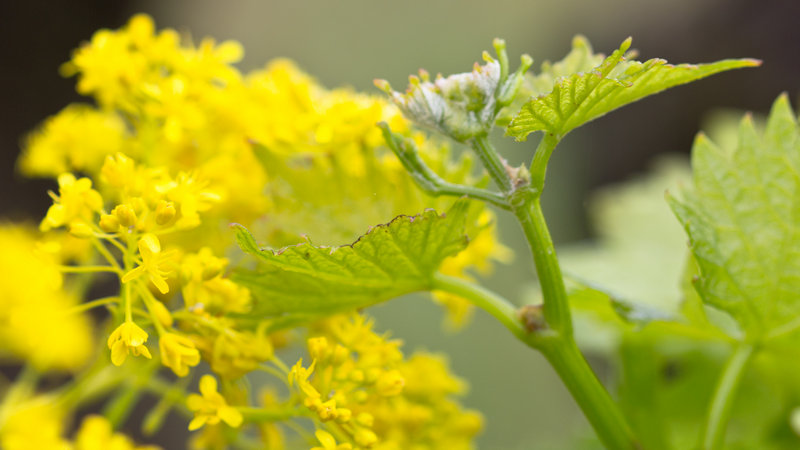
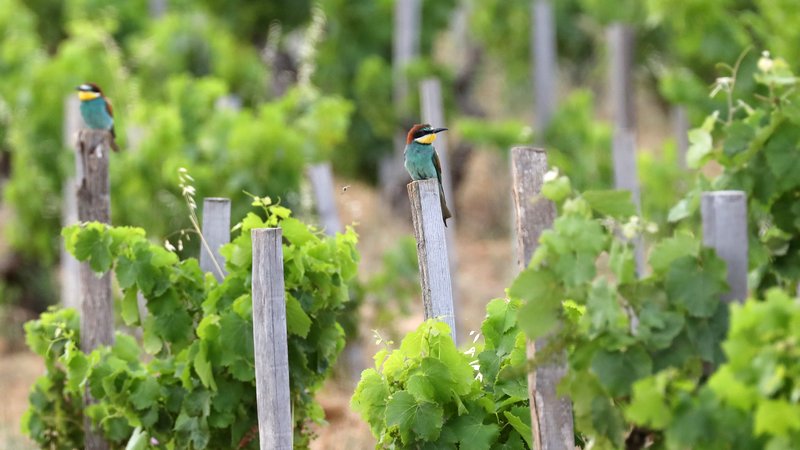
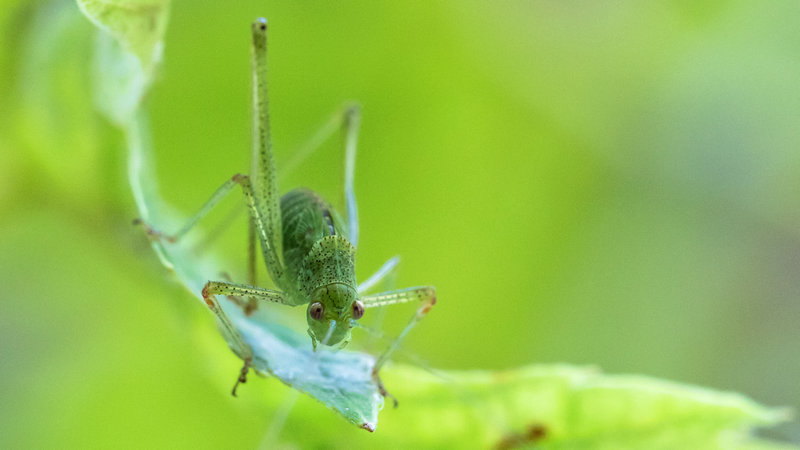
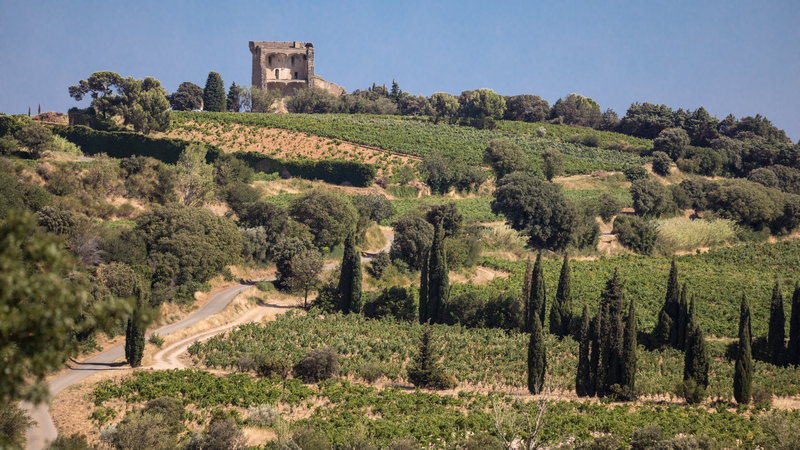
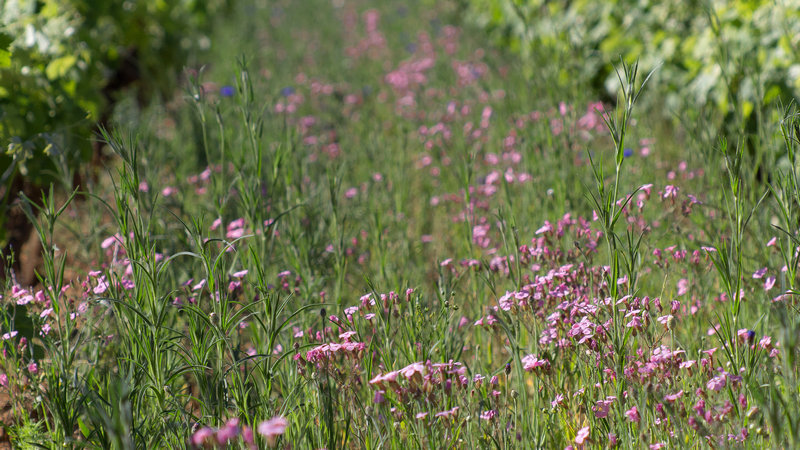

In Châteauneuf-du-Pape, we do not aim for certification at any cost ! The AOC’s sustainability approach does not foresee it, and the appellation’s specifications are entirely consistent with existing eco-certifications, even more demanding in some cases !
However, to emphasize their strong commitment to sustainable development, some vineyards have nevertheless enrolled in recognized initiatives. Today, 35% of the appellation’s surfaces are cultivated using organic or biodynamic agriculture, and nearly 50 estates are committed to sustainable agriculture under the Terra Vitis or HVE (High Environmental Value) certifications.
A few years ago, a handful of environmentally conscious winemakers proposed to shepherds to graze their sheep in the vineyards during winter. Today, through word of mouth, over 600 hectares of the vineyard, out of the 3200 in the AOC, are made available to farmers from December to February. During this season, the vines are free of grapes or leaves, and the soils are generously covered with grass, allowing the sheep to feed without impacting the vine’s growth. On one hand, the passage of the sheep allows the winemaker to delay or even cancel certain technical interventions on the soil at the end of winter; on the other hand, farmers save their pastures for the lambing period.
The young winemakers of the Châteauneuf-du-Pape appellation have set a goal: to plant 42 km of hedges. This nod to the distance of a sports marathon is a challenge. It aims to address multiple issues: beautification of our landscapes, development of floral and faunal diversity, contribution of biomass, combating the effects of runoff and soil erosion. It also aims to see the return of flora and fauna endemic to our territories, which have become scarce, like almost everywhere in France, due to deforestation and the expansion of vineyards in the second half of the 20th century.
“More plants mean more insects, more mammals, and birds.”
Hedges are homes to beneficial insects that feed on pests in the vineyards. Their presence, both in density and quantity, is proportional to the richness of available micro-habitats. It is therefore necessary to plant a diversity of trees and shrubs, an alternation of deciduous and evergreen foliage, and staggered blooming to promote the presence of these valuable allies and naturally contribute to maintaining the vine’s good health.
To ensure that these hedges are made up of plants perfectly adapted to the territory, winemakers use a selection of indigenous species, collected from wooded areas within the AOC.
For young winemakers, “it’s about giving collective momentum to this project, appropriating this practice, and keeping it accessible in the long term for all 300 producers in the appellation.”
The Grape Berry Moth is the caterpillar of a moth, the grape worm, which lays its eggs on the inflorescences and berries of the vine. Depending on the time of year, these caterpillars can destroy floral buds or cause the development of rot on the berries, severely damaging grape quality. To avoid using insecticides, there is a process called “mating disruption,” which involves regularly releasing pheromones in the vineyards. These chemical signals, specific to each animal species, condition sexual activity, among other things. By saturating the vine with these ‘scents’, the male Grape Berry Moths can no longer find their females. Impossible mating ! Today, nearly 60% of our vineyard is protected by “mating disruption.”
Old vines are not eternal ! To preserve this ampelographic heritage, an inventory of the oldest vines was undertaken in 2019. Observations, followed by samplings, were made on the most qualitative vines for their preservation and multiplication. The goal is to preserve the genetic diversity of our plant material and our 18 grape varieties, including the rarest ones (terret noir, picardan…).
Perhaps one day they will have a significant role to play, showing adaptability to climate change or certain diseases ? Today, they form the unmistakable character of the AOC wines. By playing with their assembly, they allow for the creation of balanced wines, both in terms of aromatic and alcoholic potential.
From 2025, the first grafts from these old endemic strains will be available to the appellation’s winemakers, allowing for a gentle renewal of the vineyard…
As the first AOC wine in France in 1936, the 3,150 hectares of the appellation extend over 5 communes: Châteauneuf-du-Pape, Bédarrides, Courthézon, Orange, and Sorgues. With 300 harvest declarants, the appellation produces an average of 90,000 hectoliters per vintage, or about 12 million bottles, distributed to 93% for red wines and 7% for white wines. Benefiting from a unique natural heritage, the AOC relies on 13 grape varieties, 5 distinct terroirs, and an exceptional climate, marked by sun and mistral, to produce exceptional wines distributed mainly for export (66% of volumes in 2021). Historically and continuously committed to sustainable development issues, 35% of the AOC’s surfaces are managed in organic or biodynamic agriculture.
BP 12-25 avenue Général de Gaulle
84231 Châteauneuf-du-Pape cedex
© CHÂTEAUNEUF DU PAPE 2023
Alcohol abuse is dangerous for your health, and should be consumed in moderation.